A measly 19% of organizations delivered successful projects, according to a recent survey. While every team’s definition of a successful project varies, most would define their success by how many projects they’ve delivered on time and without exceeding their budget. Other factors for success could include shareholder satisfaction and positive client feedback.
But how do project managers, program directors, portfolio managers, and other stakeholders keep track of all this? One of the methods that you can use to handle multiple projects is a pipeline. The pipeline is a visual tracking board for all the projects within a team or organization.
In this article, we’ll help you understand what a pipeline is in terms of project management, give examples of how different teams can use it, and answer some common questions.
What is a pipeline in project management?
In project management, a pipeline is a tool that enables managers to monitor the status of all current projects in a single window. PMs can use this detailed overview to quickly prioritize high-impact projects and handle any hurdles along the way.
It’s an easy way to monitor team progress and identify any issues in the workflow. You can see what projects are on course to reach their goals and those that need tweaks or extensions. Moreover, a pipeline helps PMs create and track a continuous cycle of project ideas, approval, implementation, production, review, and completion— all managed in one place.
Pipelines, or a version of them, can be used across every business process. You can use a pipeline to track sales leads, marketing campaigns, construction workflows, and lots more.
On monday.com, your pipeline can take the form of:
- A Kanban board, where projects are listed by their place in the workflow.
- A list where projects are grouped by parameters such as dates, deadlines, clients, etc.
- A detailed project board, with everything you need at a single glance.
- A timeline or Gantt chart, where projects are arranged in chronological order.
And these are just some of the project board views for PMs to explore within our Work OS. Pipelines are commonly used in sales, Agile project management, and software development, but the tool can be utilized across different departments, fields, and businesses.
Here’s an example of a basic Agile pipeline on monday.com:
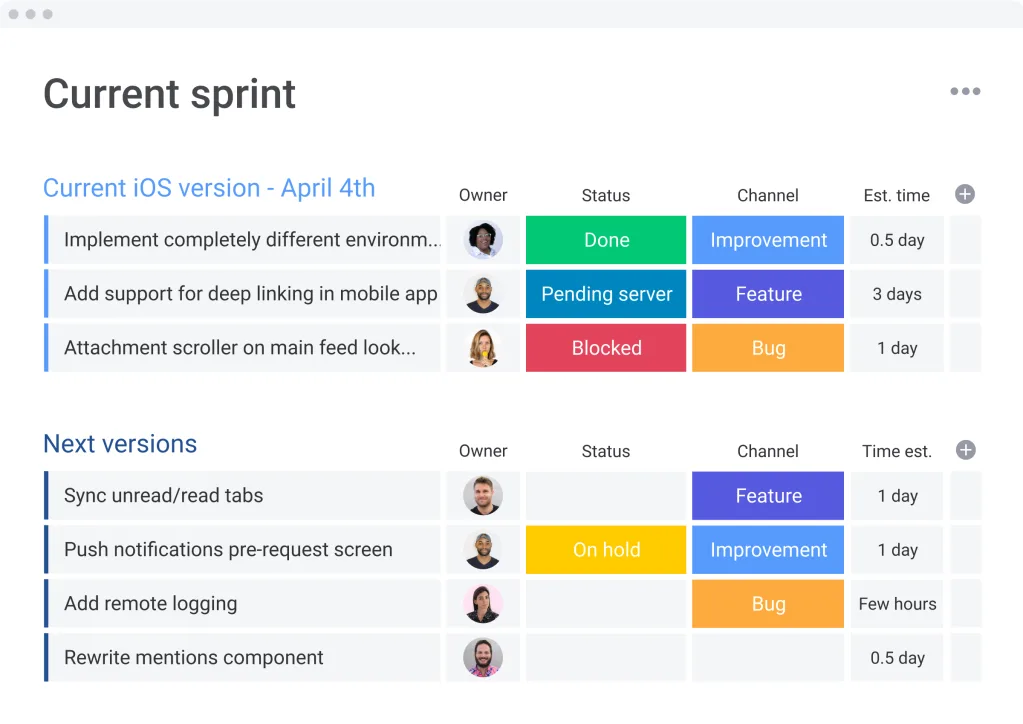
What are some examples of a project management pipeline?
Here are 3 examples of how a pipeline can be used for project and portfolio management:
#1. Marketing pipeline
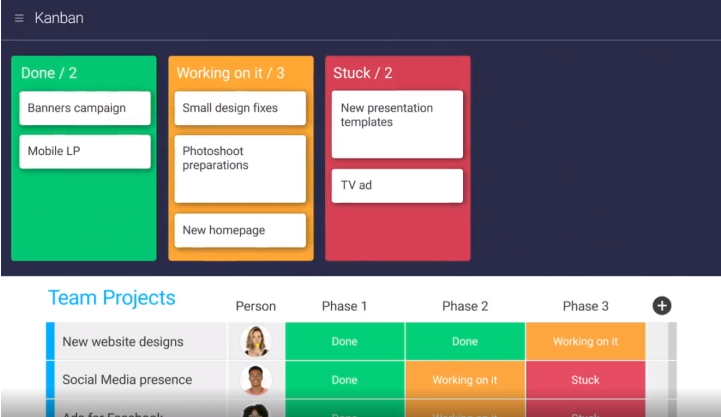
A marketing project management pipeline can be as simple as the pic above with “Working on it,” Done,” and “Stuck” sections. PMs can use a straightforward timeline like this for a single project and can add more sections if needed. For organization- or team-wide portfolio management, however, you’ll need to go into more detail.
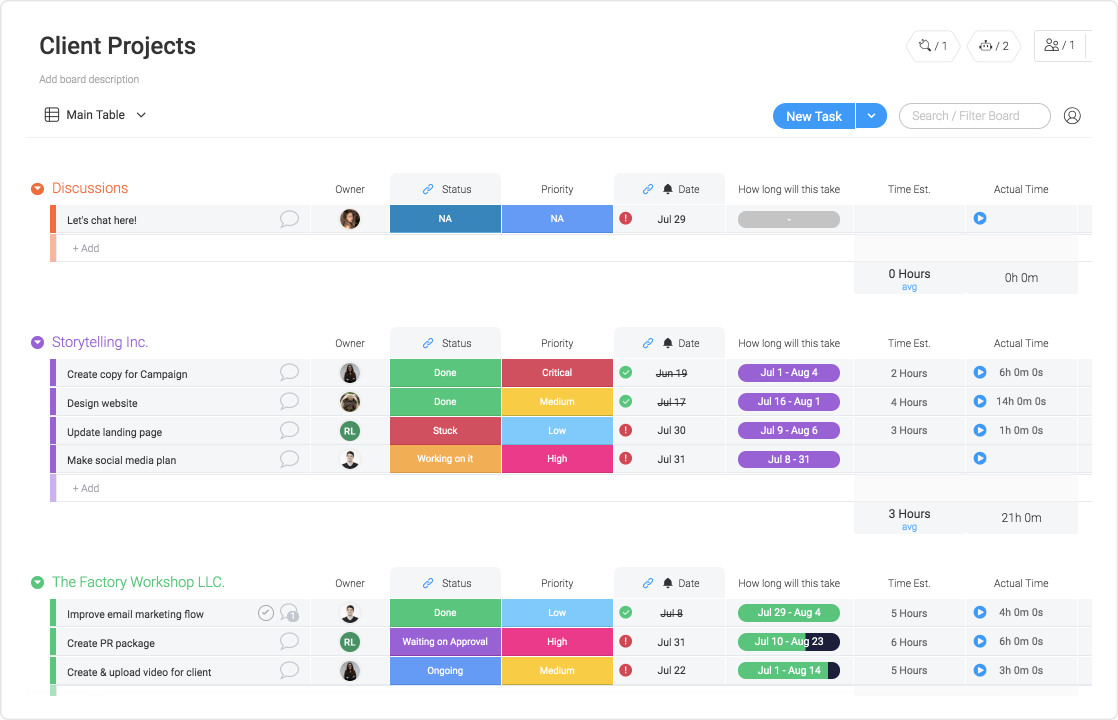
Here, there’s space for discussing ideas, separating projects by clients, listing future projects, along with estimated timelines, and a lot more. Everything is neatly divided, and there’s no confusion about team expectations. Despite the board having every necessary detail, there’s no clutter, and monday.com’s PMO work management software makes it effortless to edit every aspect.
This intuitive UI means PMs and project management offices (PMOs) can set up and edit their portfolios in minutes.
#2. Sales pipeline
One of the most common uses of a pipeline is in sales. Sales teams use pipelines to track leads and their progression through the sales cycle. As you can see in the example below, monday.com takes it a step further than just essential details and status.
The platform enables salespeople to prioritize leads, indicate the probability of closing, the deal’s size, and expected close dates.
PMs can customize their sales pipelines with as few or as many columns as needed. monday.com offers different types of columns with various formatting options. You can see this below, with the time and priority columns both indicated distinctly.
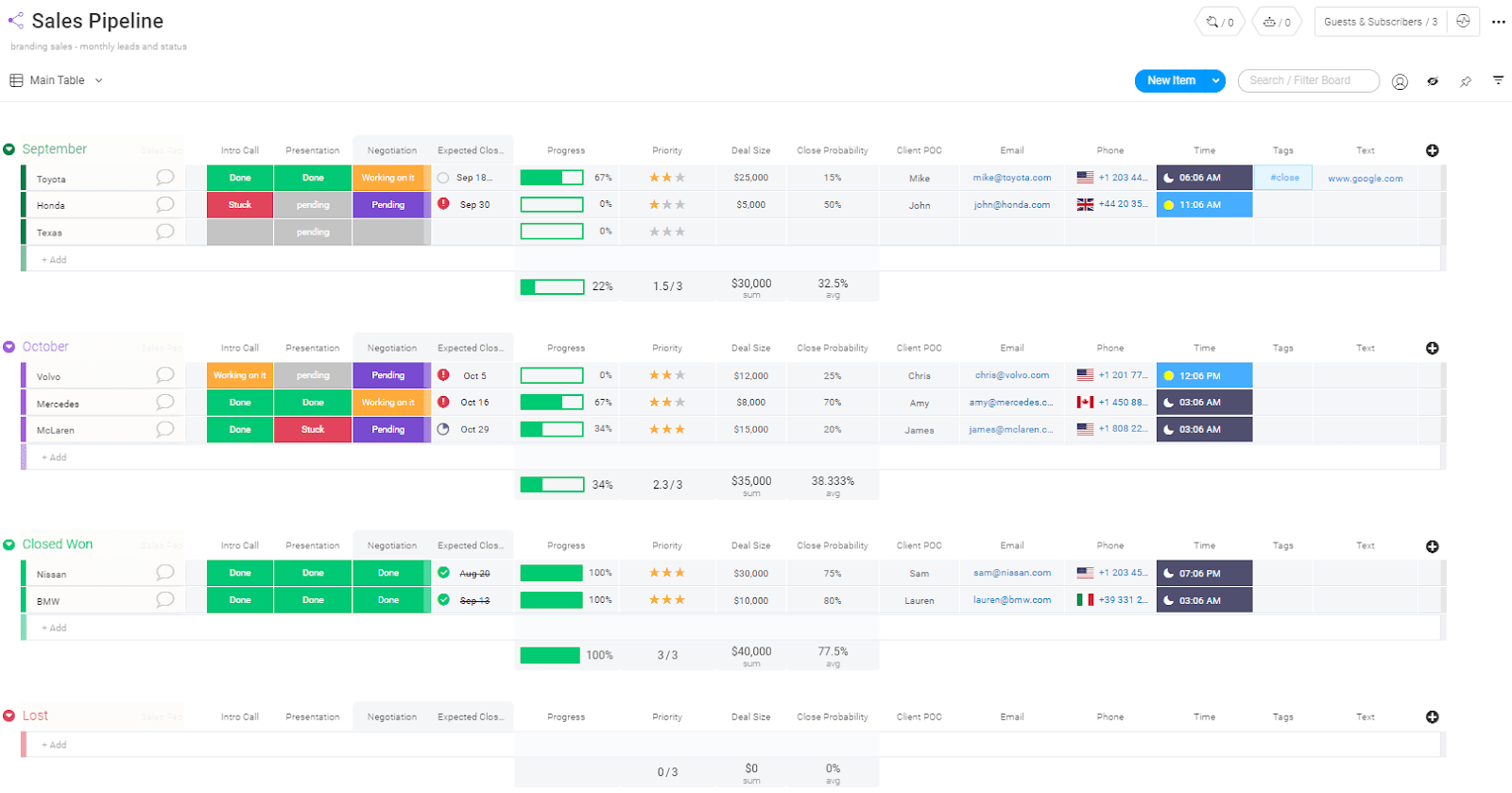
The attention to detail and the ability to have all the information in one place enable PMs and team leads to manage workloads and resources better.
#3. Product development pipeline
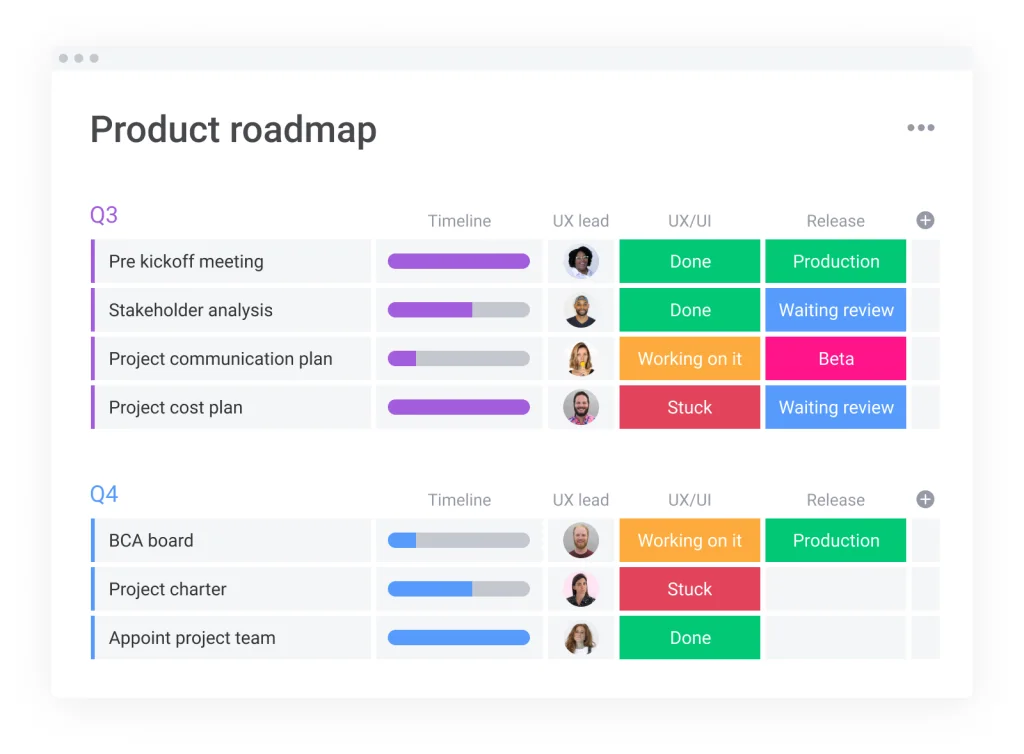
Every business wants to develop refined products that blow their customers’ minds, and having an organized, neat, yet informative pipeline can help the cause.
Be it an individual pipeline for a specific product or a portfolio of all existing product-related projects, monday.com has the templates and features to help you out.Product development teams can use a pipeline to manage data, carry out tests, and handle deployment. With everyone working from a centralized workplace, communication and collaboration are streamlined.
FAQs
#1. What are the benefits of using a pipeline for project management?
Here are a few ways teams can use pipeline tools for efficient project and portfolio management:
- Project planning: since all your projects are right in front of you, project planning becomes easier. PMs no longer have to check dates for every single project or task before planning the next one — the timeline is right in front of them.
- Progress tracking: track how every project is doing without delving into them one at a time. A pipeline of your project portfolio can show every project’s progress towards completion. PMs can make changes accordingly.
- Identify risks: see a project that’s lagging behind schedule? Take a more in-depth look and address any issues immediately. PMs can also use the pipeline’s overview to identify potential problems.
- Transparency: share pipelines with senior team members and shareholders to ensure everyone is on the same page. You can also share the pipeline with workers, so they understand how their work impacts the big picture.
- Improved communication: forget endless messages and emails around the same topic with a comprehensive pipeline that answers all simple project-related queries such as deadlines, tasks, and milestones. Talk about what really matters rather than mundane questions.
#2. How to build a project management pipeline?
You can follow these steps to build a project management pipeline in monday.com:
1. Identify categories
Let’s start with the basics. Identify how you want to group projects in your pipeline.
For example, a sales pipeline’s categories could be “new leads,” “In progress,” and then grouped by the month they converted, such as what’s shown here:
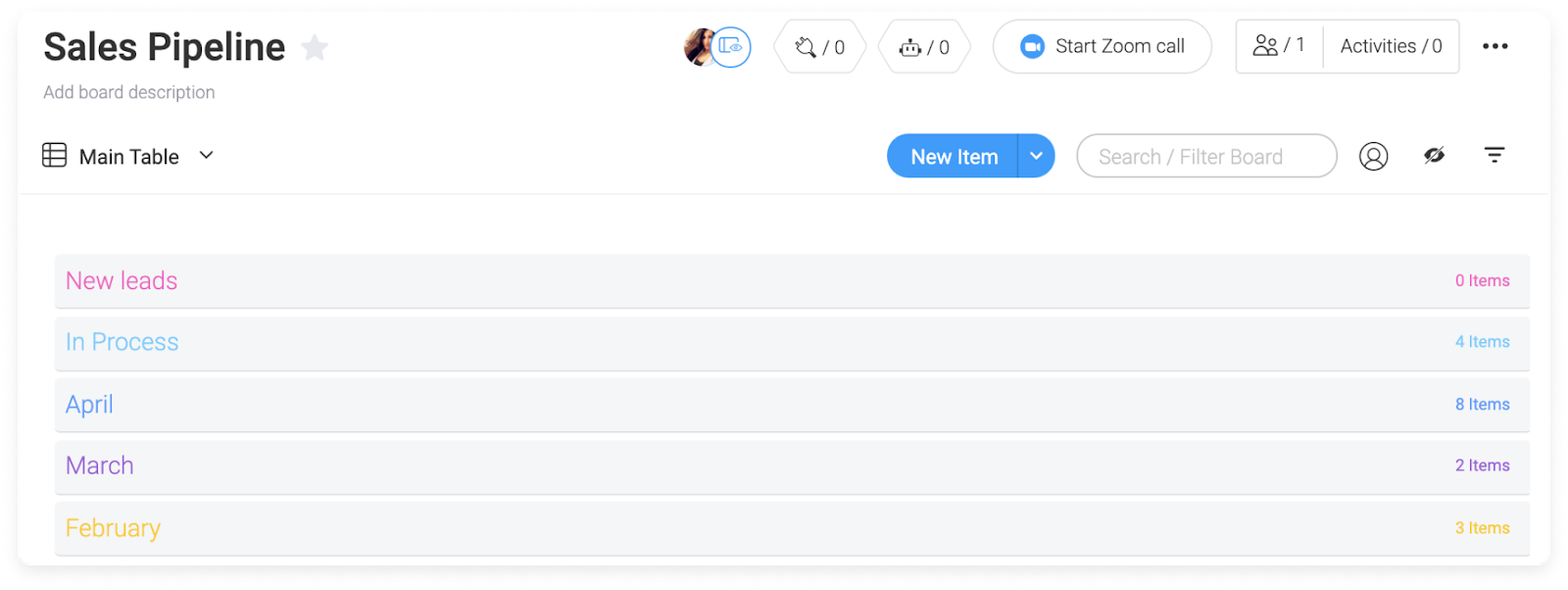
You can start with an existing monday.com template to make the process easier.
2. Add columns
Under each category, you can add columns to indicate the projects within your pipeline. For example, a social media marketing project pipeline can have columns to depict the project’s name, the project lead, what platform the project is for (Twitter, Facebook, etc.), its current status, and priority.
You can create low-level project boards for the tasks within these projects and link the 2 using monday.com’s “Connect boards” columns. Columns on monday.com can be customized to suit almost any project pipeline.
3. Automate
To effortlessly manage your pipeline, set up automation rules throughout the pipeline. For example, you can notify a specific team member when there’s a new project for a certain client, or you can automate where projects move to.
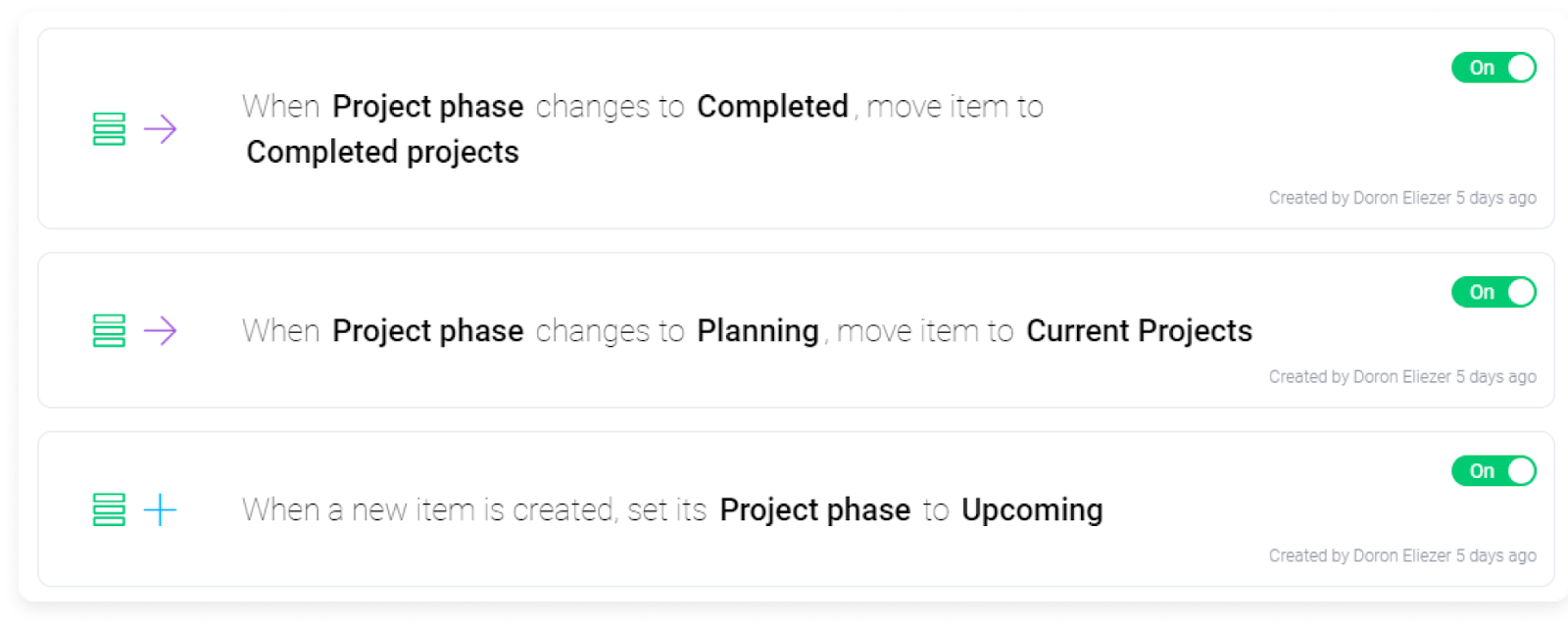
4. Build the dashboard
For PMs to efficiently track project progress, monday.com offers a Dashboard where you can track data for selected boards using more than 15 different types of widgets. You can select one or more projects to track and add widgets to indicate progress, time estimates, budget, resources, workloads, and more.
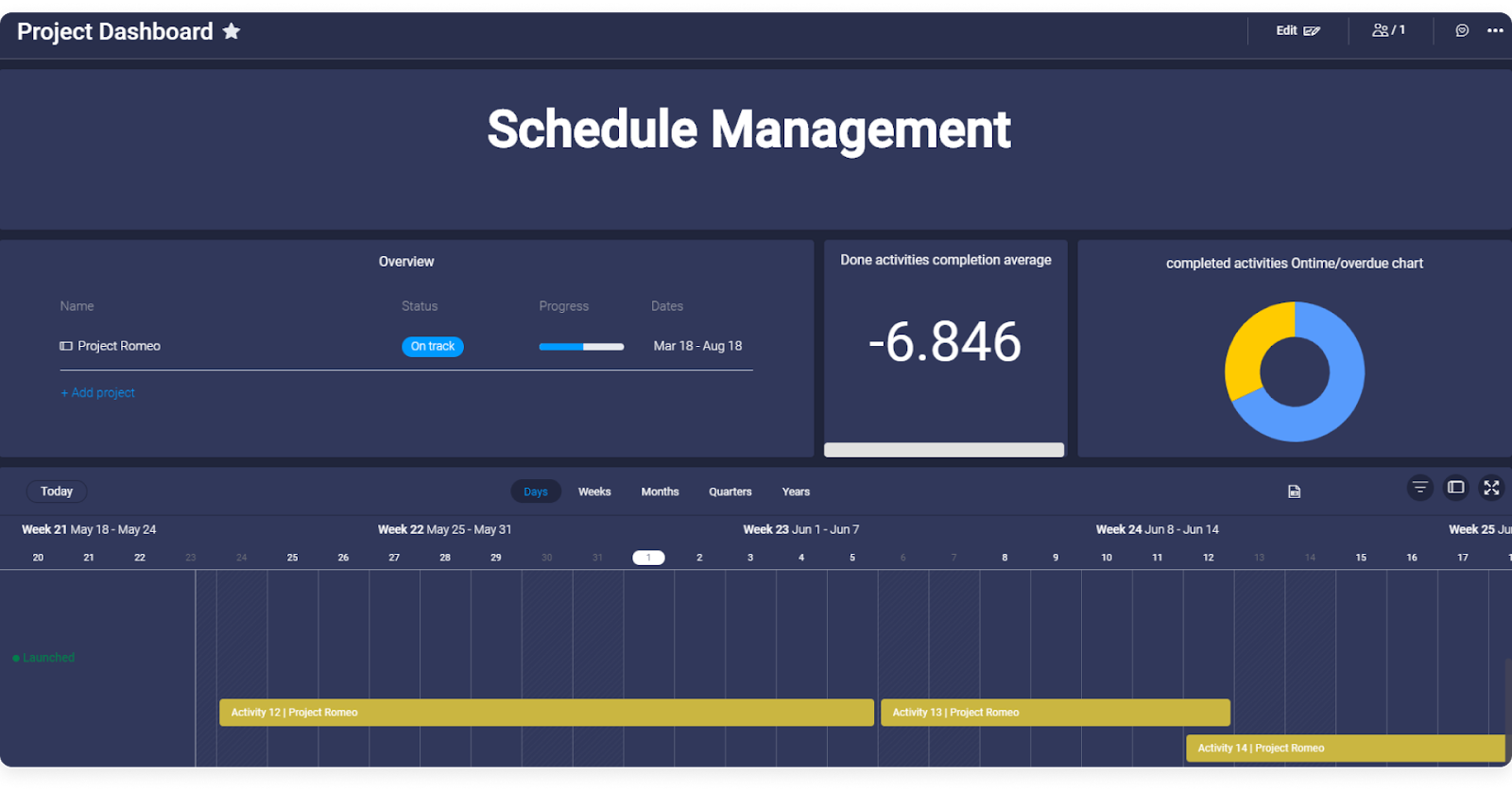
Visual tracking simplifies project and portfolio management, with managers getting a detailed overview of their pipeline with a single glance.
#3. What is the difference between a project management pipeline and project portfolio management?
Project portfolio management (PPM) is the process of selecting, prioritizing, and managing projects in order to meet an organization’s strategic objectives. It’s essentially about completing the right projects at the right time to get the desired results for the company. You can use various methods for portfolio management. For example, you can use piles of folders to manage different projects manually, or you can speed things up with pipeline management through a Work OS like monday.com.
A project management pipeline is simply one method used for portfolio management.
It’s time to create your own pipelines
Now that you know what a pipeline is, you can see the wonders it can do for you using monday.com. Our platform has all the features necessary to create detailed, intuitive timelines for every team, and our pricing won’t break the bank either! You can also take your project pipeline to the next level with automation and integrations.
To get started with pipelines, you can check out our Sales Pipeline Template.

